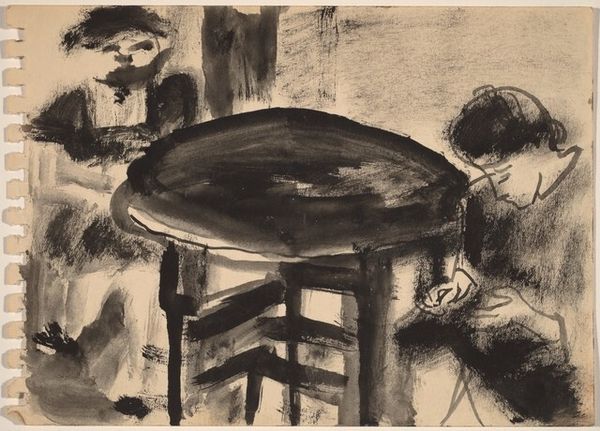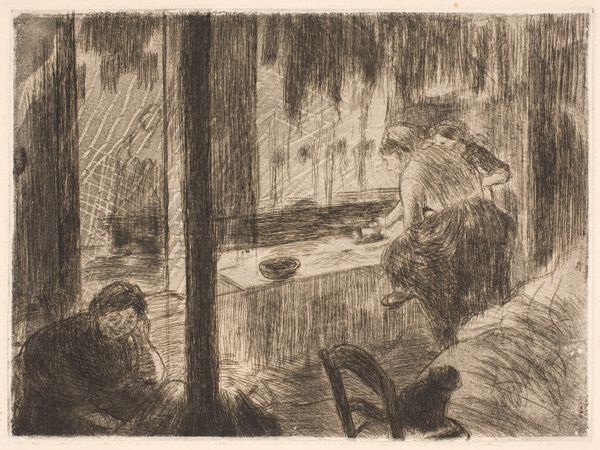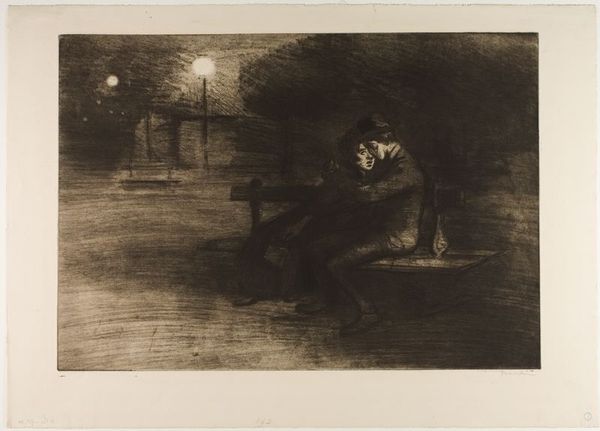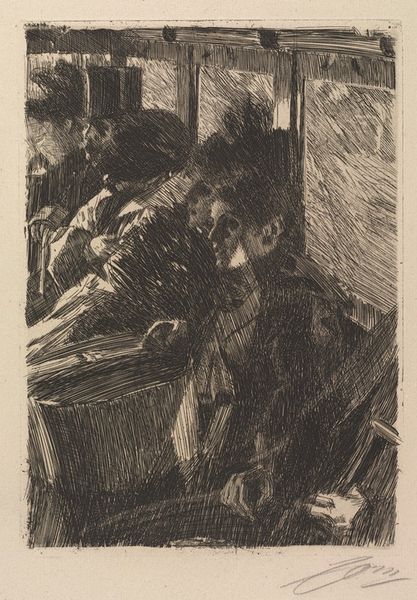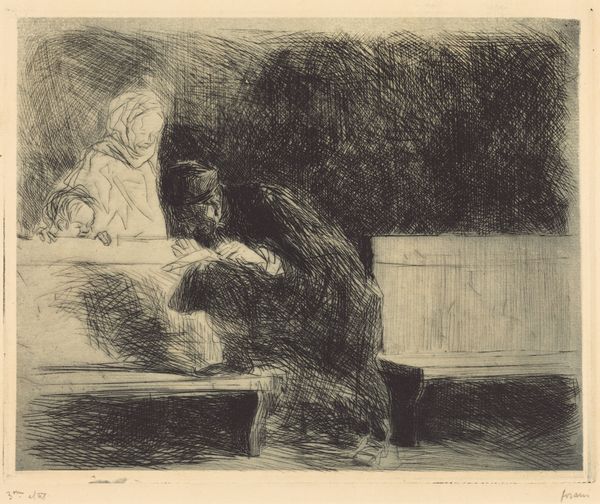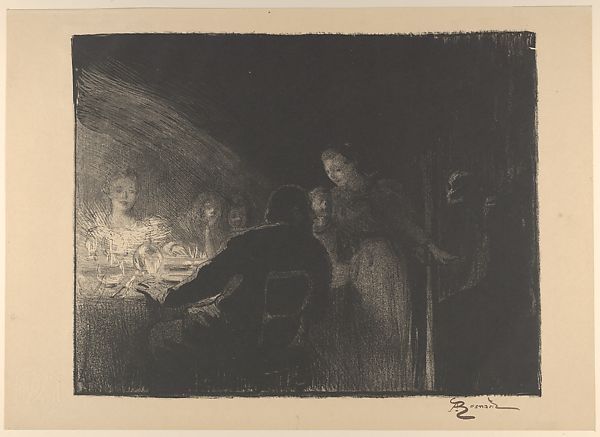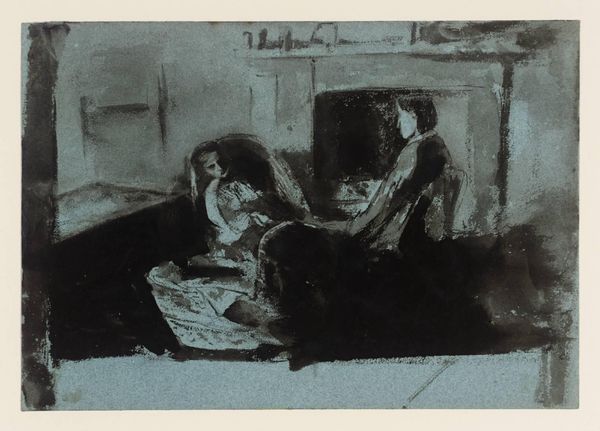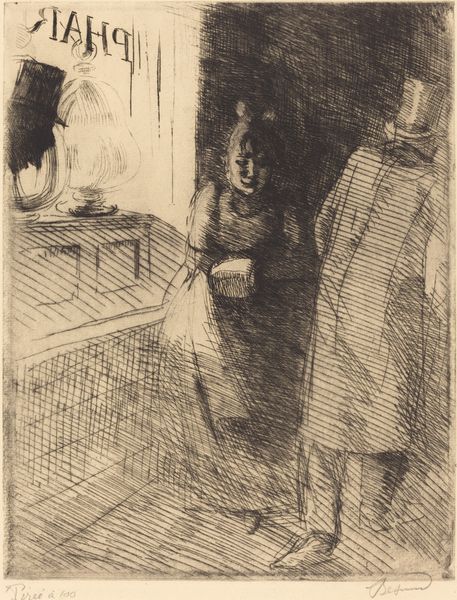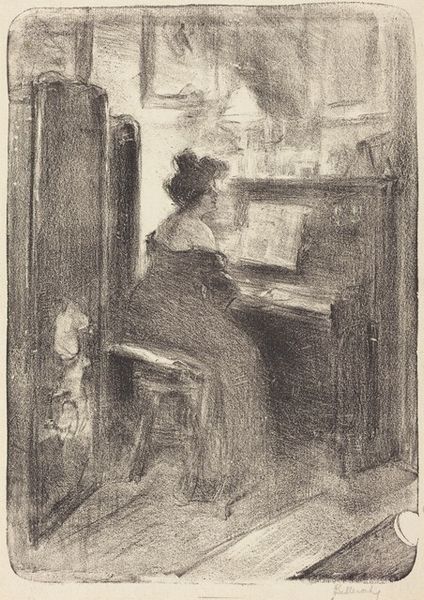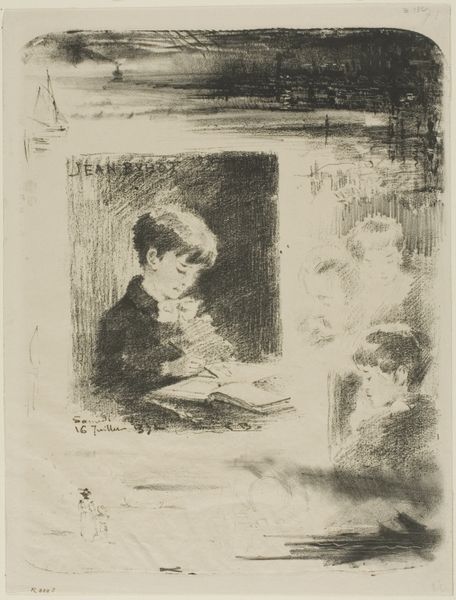
drawing, print, etching
#
drawing
# print
#
etching
#
landscape
#
realism
Copyright: National Gallery of Art: CC0 1.0
Curator: This is James McBey's etching from 1917, "The Carpenter of Hesdin." Editor: It's stark, isn't it? All rough, dark lines, like a scene glimpsed through smoke. I feel like I can almost smell the wood dust. Curator: The social context here is crucial. Hesdin was a town occupied by the British during World War I. McBey was a war artist; it's fascinating how he portrays not the front lines, but the daily labour that sustains the war effort. Look at how the figure is rendered—lost in labor. Editor: Lost indeed! You almost can’t distinguish the carpenter from his workshop. Everything seems to blend, foreground and background, figure and the objects of their trade. You said 'etching' - can you speak a little about McBey's methods? Curator: Certainly. Etching is an indirect process where the artist covers a metal plate with a waxy, acid-resistant ground. They then draw through the ground, exposing the metal. The plate is then submerged in acid, which bites into the exposed lines. This process determines the depth and darkness of the lines when printed. In "The Carpenter of Hesdin", McBey uses this process to convey the intensity and roughness of labor. See the variety in the hatching of the lines around the shelves, and how little variation he allows in the darker spaces occupied by the carpenter? Editor: I think that’s very astute. The political implications of such an intimate portrayal, seemingly far from any bombastic war imagery, feel deeply radical. The man is consumed by this. Curator: Precisely! By showing us the means of production, the sheer manual labour involved, McBey provides a crucial perspective on the industrial machinery of warfare. This wasn’t abstract work; human hands and backs were integral. Editor: It makes me rethink what images of war can be, broadening what's accepted, and perhaps who is given visibility. Curator: And in showing how close the carpenter's shop is to the materials that made the Great War possible, McBey’s simple print brings this man into the picture—demanding we acknowledge the real labour upon which it depended. Thank you, that's been enlightening. Editor: Indeed, I appreciate learning more about the materiality and labour woven into the piece. It truly is a poignant reflection on the realities behind wartime imagery.
Comments
No comments
Be the first to comment and join the conversation on the ultimate creative platform.
